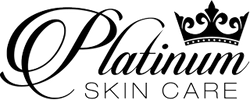Skin Care Fears. Acids and Peeling. Newbie’s guide to skin peels
Posted by Dana Ramos, author The Skin Regime: Boot Camp for Beautiful Skin on Jun 02, 2017
Too scared to try this stuff? A newbie’s guide to skin “peels”

Often, when I talk to people about the amazing results they can get at home, inexpensively, with do-it-yourself skin peels, they’ll reply by shaking their heads and saying, “Oh, no—I’m too scared to try that stuff, it could make my skin peel off!” Or, “It has acid in it? Who would ever put acid on their skin?!” These skincare product fears are due to either lack of full information, or complete misinformation.
Fear is a useful and indispensable emotion; it develops after we learn about thing that can harm us and teaches us to avoid that thing. But fear should also disappear once we learn:
- how to avoid or protect ourselves against the scary thing, or when we
- that the thing is not harmful at all; maybe it just has a scary name or title, like hyaluronic acid (which actually is very good for your skin).
There are lots of scary things out there, like global warming, terrorists, crazy world leaders with nukes, Big Cosmetic and Skincare Companies with products that don’t really work… (That last one isn’t exactly scary—but it really ticks me off). *[Products that don't work are scary to me! .. J.Tilney PlatinumSkinCare].
However, fearing skincare products is simply not rational for several reasons:
1. You have the power to control the use and potency strength you purchase of a product. I mean, c’mon—it’s not like a bottle of Retinol Serum is going sneak into your room and smear itself all over your face while you’re sleeping.
2. The word “acid” is not always a scary thing. Here are some examples good acids our body needs: ascorbic acid, citric acid, amino acids, omega fatty acids, folic acid. Our skin can benefit tremendously from glycolic, lactic, mandelic and other acids; they smooth skin tone, improve acne and fine lines, reduce pore size and more. (Of course, don’t go near “battery acid.”)
3. Using a “peel” does not mean your skin will peel off! [Not like in a horror flick anyways - but the goal IS to get the skin to peel off and stimulate regeneration - whether this is visible to the naked eye or not]. Yes, using a very strong peel without proper information on how to use them can **"burn"** your skin, but you will easily discover that most mild and moderate peels do not create peeling that you can see visibly; at the most, a mild-to-moderate strength peel will create some gradual flaking of the skin (which is a good thing—it shows you proof that your skin is exfoliating and regenerating). Peels are generally made of good skincare acids like those noted above and have great benefits.
[**Burn** - All chemical peels will "burn". The acids are creating a "controlled burn". This is the goal and nothing to be worried about in any way. PlatinumSkinCare]
4. You can and should always test any new product on a small patch of your skin, like the inside of your elbow, or a spot on your jaw—this way, you can see for yourself that a product is not scary and if it is right for your skin.

Here are some common questions and answers about peels.
What happens when you get a peel? Does it hurt or burn?
Newbies and people will sensitive skin will start with a mild peel, such as the 1-4-All Peel (which is layerable for a mild to moderate peel. See below for a list of mild peels) or a Mandelic & Azelaic Peel. You might feel a slight tingling or itching sensation, or you’ll feel nothing at all with a very mild peel.
What can I expect after a peel?
You might have a little redness that goes away after an hour or two, followed by skin that looks clean and glowing. If you use a mild peel, you probably won't have any noticeable flaking or peeling in the days ahead, but the great benefits of are still happening underneath the top layer.
Do peels really work?
They really do - glycolic and other peels have been used widely for decades and are considered safe and effective for a variety of skin issues and overall improvement of the skin. Glycolic penetrates and build collagen, helps with exfoliation and regeneration of new skin cells, and can even help prevent skin cancer. A good peel will result in overall skin improvements like:
- giving you more even tone
- fading discoloration
- reducing pore size
- acne improvement, and
- fine line improvement.
Who can do peels—or who should not do them?
Virtually everyone with any skin color and healthy skin can benefit from a peel--even those with mild rosacea may benefit, but peels are not advised for people with severe acne, extremely sensitive/hyper-reactive skin, open lesions, or with other skin diseases such as eczema. It’s also a good idea to avoid trying new products if you are pregnant or nursing. And of course, it is always advised to test ahead of time on the inside of your arm, or on a small part of your face, such as a spot on the jaw.
There are tons of peels on the market. Which ones are safe for at-home use?
Glycolic-acid based peels are safe for newbies in mild-to-moderate strength, as are those with Mandelic acid or Lactic acid. Newbies and those with sensitive skin should start by trying a relatively mild peel (see list below for recommendations).
So how do you use a peel?
Follow the instructions carefully! Usually, you simply cleanse and prepare your skin with alcohol, peel preparation solution, or Witch Hazel, then apply the peel for a minute or two and wash off, ending the treatment by applying moisturizer. And always test a new peel on a small section of skin ahead of time—like you should with any new product.
Is it really that easy?
Beyond easy! Total time spent is about five or ten minutes.
How often can I use a peel?
Every seven to fourteen days, for a total of 6 to 8 peels, then one for maintenance every month or so. You do not want to do peels year-around and end of with over-exfoliated skin—that could lead to fragile skin prone to acne or other infections.
I want to know more; I have so many questions!
Visit the page Everything You Ever Wanted To Know About Peels
Get a FREE consultation from Platinum Skincare.
Also (shameless plug ahead) read the simple, fun, and honest book, The Skin Regime; Boot Camp for Beautiful Skin.The book's technical advice is provided by one of the country's most respected dermatologists, Dr. David Bank of New York, so you can be sure the info and advice is accurate. *You can read the first 30 pages of the book, free, HERE.
So let’s get started! Here are some peels for newbies and sensitive-skin users to try:
1. The 1-4-All Peel (strength is layerable from mild to moderate/strong)
2. Mandelic Peel 22 (also available in pre-soaked pads)
3. Glycolic Peel 30 (also available in pre-soaked pads)
4. Lactic Acid Peel (also available in pre-soaked pads)
5. TCA 13% Peel *if you are not fearful of a stronger acid. 1 layer of this is very comfortable.
You should always follow a peel treatment will a good moisturizer like the Advanced Care Moisturizer. And as always, use a good sunscreen on your glowing skin; check out the Cotz Sunscreens.
Again, Platinum Skincare can answer your questions and guide you even further: Click here to get a free consultation.
Where can I buy Dana's Book?
The Skin Regime; Boot Camp for Beautiful Skin, available as a Kindle download or Buy paperback to buy your paperback copy from Platinum Skin Care. You can also read the first chapter--FREE--by click here to read 1st chapter.
If you found this post helpful, we would LOVE it if you shared it with your friends socially!



